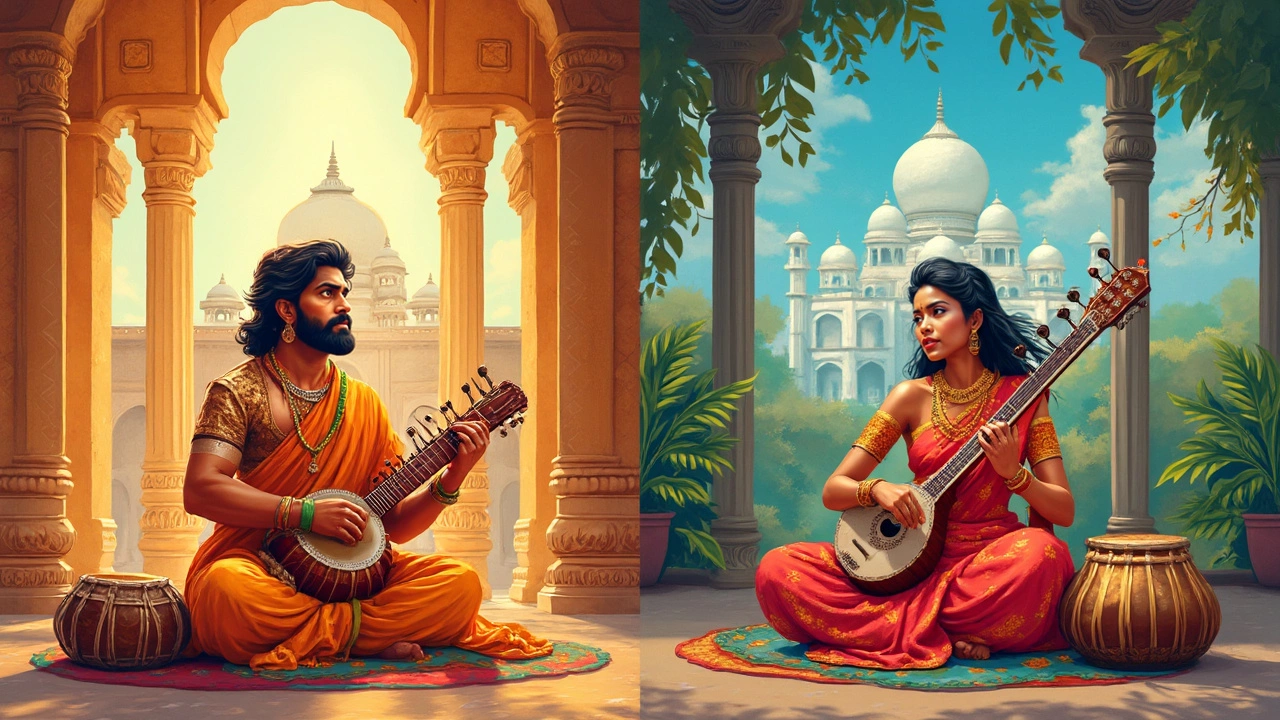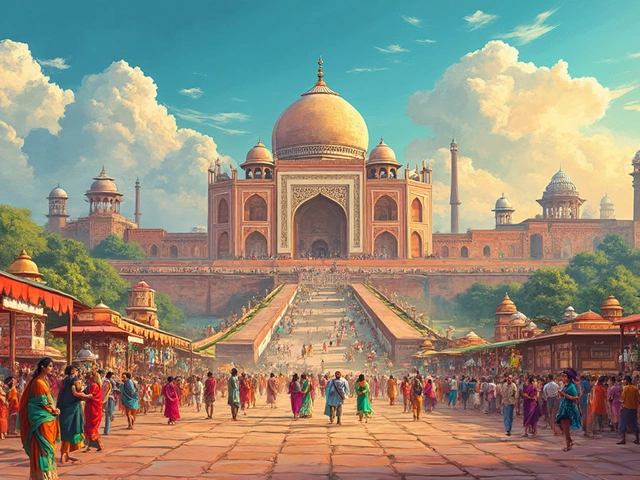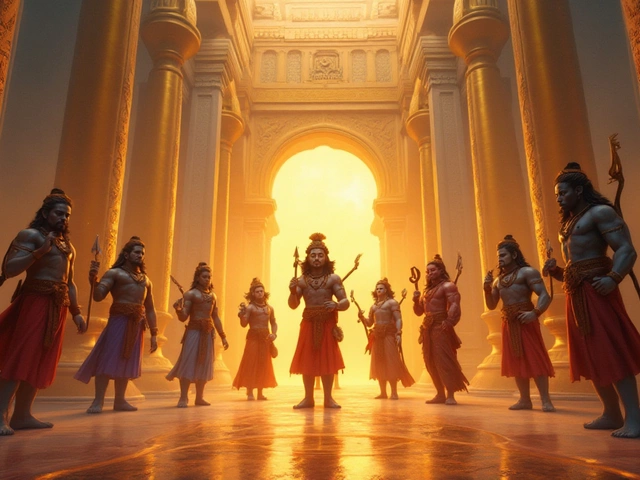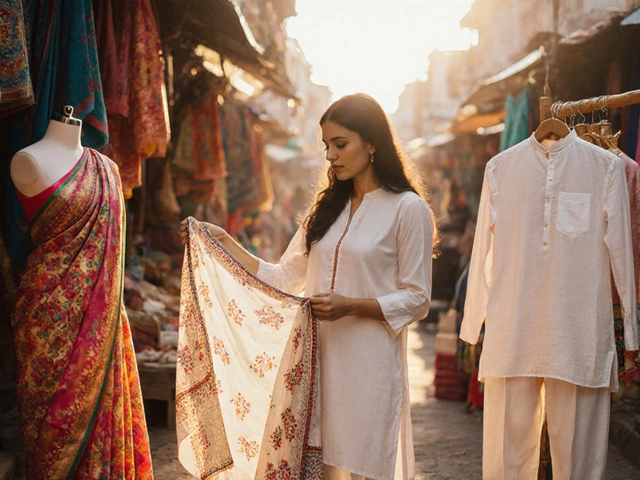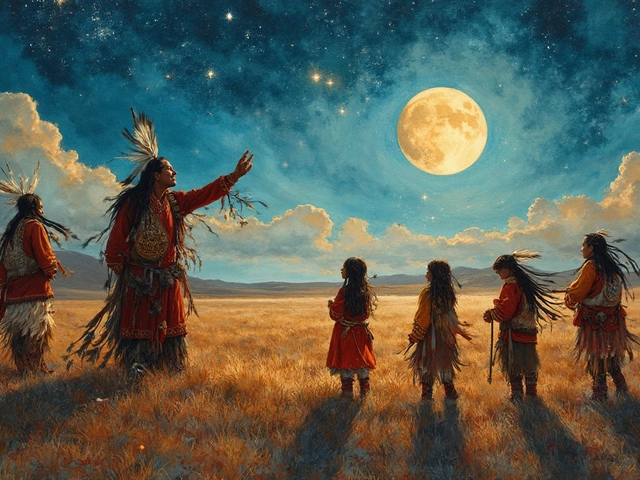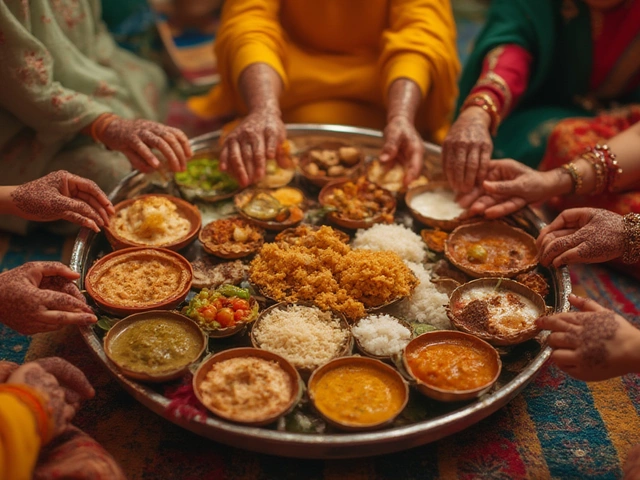Ever argued with a friend about which really came first, Carnatic or Hindustani? If you’ve Googled it, you’ll know the internet is full of dramatic claims, and not a lot of real facts. Here’s the thing: both styles might feel miles apart today, but their roots are tangled way back in the same old musical tradition.
Before you buy into the ‘North vs South’ debate, it’s worth knowing that Indian classical music wasn’t even split into Carnatic and Hindustani until centuries after it began. So, asking which came “first” is kind of like asking if the yolk or the white in an egg was made before the other. They started out as one and only split later on.
If you care about Indian music, knowing this backstory helps you appreciate both styles without getting stuck in pointless arguments. You can also pick up on clues—like certain ragas, instruments, and even the way words are set to music—that reveal their shared heritage. Watching a jugalbandi concert (where musicians from both styles jam together) becomes a whole lot richer with this knowledge.
- Ancient Roots and Shared Beginnings
- The Great Musical Split
- Carnatic: South India's Take
- Hindustani: The North’s Journey
- Making Sense of ‘Which Came First?’
Ancient Roots and Shared Beginnings
Loads of folks think Carnatic and Hindustani music have always existed as two totally separate worlds, but the real story is way messier—and way more interesting. Both these traditions started from the same old-school Indian music system, which is traced back over two thousand years. If you crack open any serious music history book, you’ll see a lot of references to the Natya Shastra. Written somewhere between 200 BCE and 200 CE, the Natya Shastra is this ancient book that covered music, drama, and dance. It’s kind of like India’s original music manual and gets quoted by musicians from both sides even now.
Back then, there wasn’t any ‘Carnatic’ for the south or ‘Hindustani’ for the north. There was just one main system of classical music known as ‘sangita’—and it included singing, playing instruments, and even dance. Over time, this one system set up a bunch of ideas that are still at the core of both music traditions today. Things like ragas (melodic frameworks), talas (rhythmic cycles), and a huge focus on improvisation all started here.
If you check old texts and listen to what leading musicians say, you’ll notice a lot of overlap. Most instruments at that time—like the veena, flute, and drums—show up in early art and writing from all over the Indian subcontinent, not just one region.
Let’s look at a quick timeline to see how far back it goes:
| Period | Event |
|---|---|
| c. 2000 BCE | Vedic chants and hymns, believed to be one of the earliest forms of organized music in India |
| c. 200 BCE – 200 CE | The Natya Shastra is written, giving shape to ancient Indian music ideas |
| 7th–13th Centuries | Text like Sangita Ratnakara by Sharngadeva shape music theory used in both north and south even today |
| 13th Century Onward | Distinct northern and southern styles slowly start to show due to political and cultural changes |
So, when you hear people argue about which tradition is ‘older,’ now you know—they’re both branches of the same ancient tree. If you want to recognize that unity, check out ragas such as Bhairavi or Kalyani. You’ll find them played with different flavors in both styles, but the ancient roots are hard to miss.
The Great Musical Split
The real split between Carnatic and Hindustani music kicked off around the 13th century. Before that, what people played and sang across the subcontinent was more or less the same thing. This shared tradition leaned hard on ancient texts like the Natya Shastra, but after a certain point, politics and geography got in the way.
So, what caused the divide? The major turning point was the arrival of Persian and Central Asian influences in North India. With the rise of the Delhi Sultanate and later the Mughal Empire, the northern scene started borrowing from Persian music—new instruments, different rhythms, and a big focus on improvisation. Meanwhile, the South stayed closer to the older traditions and pushed forward its own flavor using local melodies, less outside influence, and a tighter focus on devotional themes.
The table below shows a few key contrasts that began showing up after the split:
| Feature | Carnatic | Hindustani |
|---|---|---|
| Geography | Southern India | Northern India |
| Main Influences | Vedic/Sanskrit, Hindu devotional | Persian, Mughal, Central Asian |
| Popular Instruments | Veena, mridangam | Sitar, tabla |
| Vocal Styles | Structured kritis/compositions | Improvised khayal, dhrupad |
It’s not just about instruments or tunes, though. The real difference is in how each system works. Carnatic put a lot of energy into fixed songs and complex rhythms, while Hindustani put the spotlight on improvisation and mood. You can even hear these differences today when you listen to legends like M.S. Subbulakshmi (Carnatic) compared to Ravi Shankar (Hindustani).
- If you want to spot the split, listen for the sound of the Carnatic veena or the Hindustani sitar. They almost never cross paths.
- Notice how Carnatic concerts stick to planned compositions, and Hindustani gigs let artists jam for longer, building up to big dramatic moments.
This historical split is what eventually led to the fully separate styles we know today.
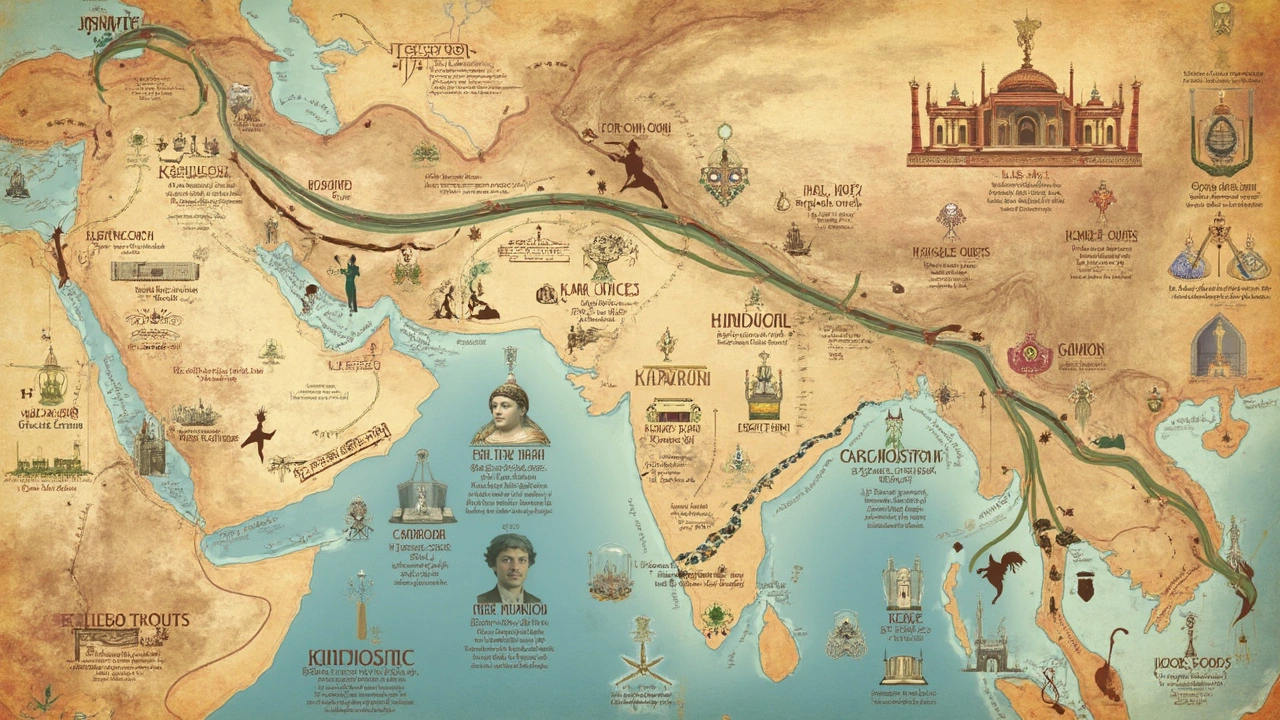
Carnatic: South India's Take
Down in South India, the Carnatic music tradition stands out for sticking close to its old-school roots. It mainly covers the states of Tamil Nadu, Karnataka, Andhra Pradesh, Kerala, and a corner of Telangana. While its base is ancient, the music you hear in concerts today actually took shape in the 16th to 18th centuries, thanks to the ‘Trinity’ of composers—Tyagaraja, Muthuswami Dikshitar, and Syama Sastri. These three pretty much built the blueprint for Carnatic music concerts as we know them.
One thing about Carnatic music: it never really got influenced by outside musical styles, especially after the Mughal era hit North India. It stuck with Sanskrit and regional languages, sharp rhythmic patterns (called "tala"), and a strong link to devotional themes. Most songs praise Hindu gods and use lyrics that fans can actually understand, so the meaning isn’t totally lost on the listener.
If you ever go to a Carnatic show, here are a few things you’ll always spot:
- Vocal music takes center stage, even if there are awesome violin or flute players.
- Instruments like the mridangam, violin, and veena are the go-to choices.
- Improvisation is huge, but the song’s words and melody stay as the anchor.
Take a look at some quick stats that give you a picture of Carnatic music’s world today:
| Aspect | Details |
|---|---|
| Main Region | Southern India |
| Core Composers | Tyagaraja, Dikshitar, Syama Sastri |
| Languages Used | Mostly Telugu, Tamil, Sanskrit |
| Major Instruments | Mridangam, violin, veena, flute |
| Key Feature | Complex rhythmic cycles (tala) |
If you want to get into Carnatic music, start by listening to live recordings of the Trinity’s compositions, and try clapping along with the rhythms. Once you catch the basics, you’ll notice how every singer or player adds their own spice, but always comes back to tradition. It’s the best way to feel the energy that keeps Carnatic music alive, century after century.
Hindustani: The North’s Journey
Hindustani classical music, the heartbeat of northern India, didn’t just pop up overnight. Its story really kicked off around the 13th century, when North India saw a wave of cultural exchange—thanks, in part, to invasions and new dynasties like the Delhi Sultanate and the Mughals. These rulers encouraged creativity, and their courts became melting pots for Persian, Central Asian, and native Indian sounds. Over time, musicians in the north started tweaking the old frameworks, giving birth to Hindustani music as we know it.
Before this split, both north and south followed a common system called the "Sangeet Shastra." But political upheaval and new ideas pushed northern musicians to experiment more. The use of instruments such as the sitar and tabla really got ramped up. The singing styles evolved, too, giving us forms like khayal, dhrupad, and later, thumri. Each of these still defines Hindustani music and shows off its range.
- Dhrupad: The oldest style, often serious, with deep spiritual roots. Big on rhythm and discipline.
- Khayal: Looser and more expressive, took center stage around the 18th century. Artists improvise a lot, making each performance unique.
- Thumri: More focused on emotion and storytelling. The lyrics are about love and longing, and there’s plenty of room for playfulness.
The Mughals didn’t just sponsor music—they also documented it. The Mughal emperor Akbar’s court had the famous musician Tansen, who is considered a legend even today. Training moved from temples to private homes, creating the "gharana" system. Each gharana, or musical family, developed its own twists on ragas and rhythm.
Here’s a quick look at the influence of culture and geography on Hindustani music:
| Region | Distinctive Feature | Popular Instruments |
|---|---|---|
| Punjab | Energetic rhythmic cycles | Tabla, Sarangi |
| Delhi | Khayal, Dhrupad schools | Sitar, Harmonium |
| Lucknow | Refined thumri style | Sitar, Tabla |
| Banaras | Dhrupad revival, creative improvisation | Shehnai, Pakhawaj |
If you want to dive in, start with recordings of maestros like Ravi Shankar (sitar), Zakir Hussain (tabla), or Bade Ghulam Ali Khan (vocal). Listening to different gharanas gives you a real taste of how this music has evolved—sometimes over just a couple of generations. The bottom line: Hindustani music is where old meets new, and north meets the rest of the world.
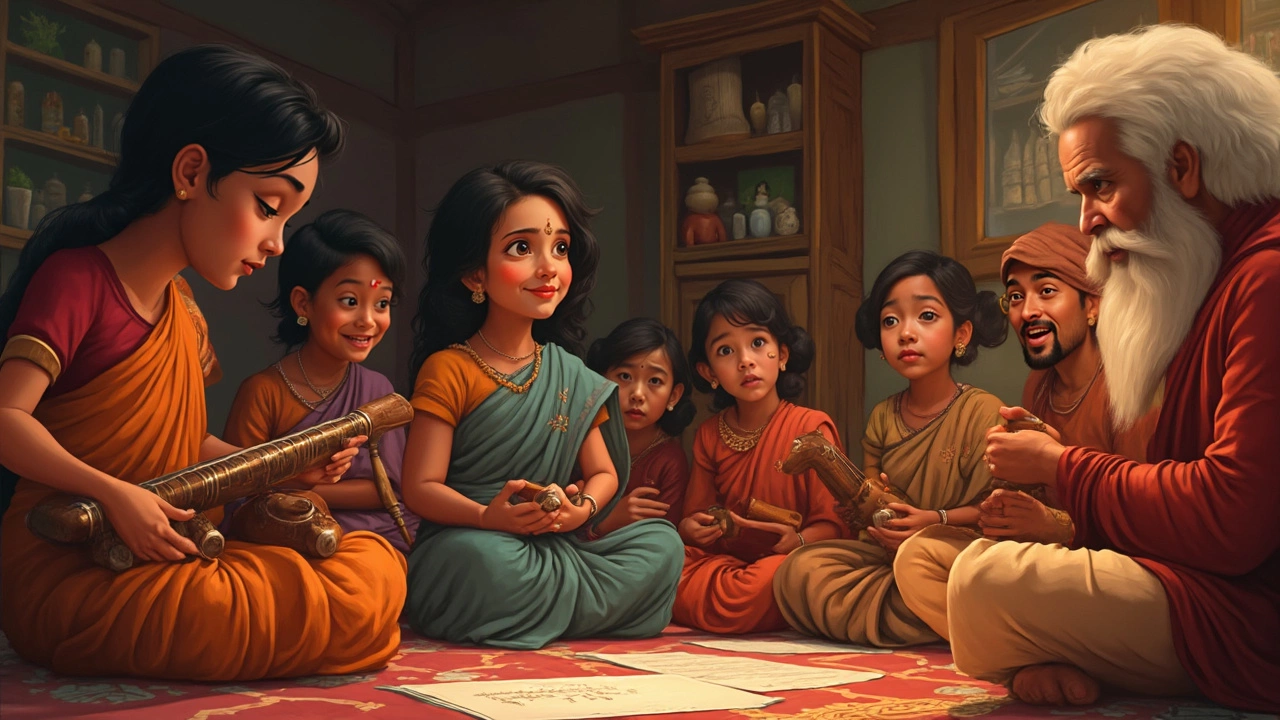
Making Sense of ‘Which Came First?’
There's a simple truth about Indian classical music: nobody can point to a single date or event and claim, “Yep, this is when Carnatic or Hindustani music started.” Before the 13th century or so, everything was just known as ‘Sangeet’—that’s the ancient Sanskrit word for music. All the core building blocks appeared as one system, including ragas, talas, and compositions. This system was shaped by treatises like the ‘Natya Shastra’ (way back around 200 BCE–200 CE) and later the ‘Sangita Ratnakara’ by Sharngadeva in the 1200s. These weren’t split into north and south styles; everyone used the same musical guides.
The real shift came with outside influences. Around the 13th and 14th centuries, north India was buzzing with new ideas due to the arrival of Persian and Central Asian rulers. Local musicians picked up fresh instruments (like the sitar and tabla) and new ways of singing, which over generations became what we now call Hindustani music. In the south, musicians kept more of the older traditions alive, staying closer to the originals, and gradually shaped the Carnatic style you hear today.
So, if you’re wondering which came first, it’s more accurate to say that both Carnatic and Hindustani music share the same roots. Think of them as siblings who grew up in the same house but later moved to different cities and picked up their own accents. The original “Indian classical music” came first; the split into Carnatic and Hindustani was a historical twist, not a birth order.
If you’re trying to explain this at a party—or to settle a heated debate—just remember:
- Indian classical music started as one tradition (Sangeet).
- The split into Carnatic and Hindustani came way later, because of politics, migration, and new influences.
- Asking which came first is a bit like debating which slice of bread was cut from the loaf first—the whole loaf was there before anyone started slicing.
This way, you’ll sound like an expert who actually knows how things unfolded, and you won’t fall for dramatic myths or regional bias.
